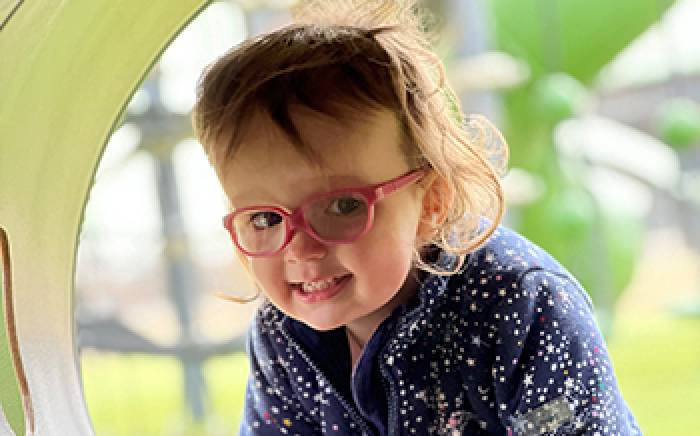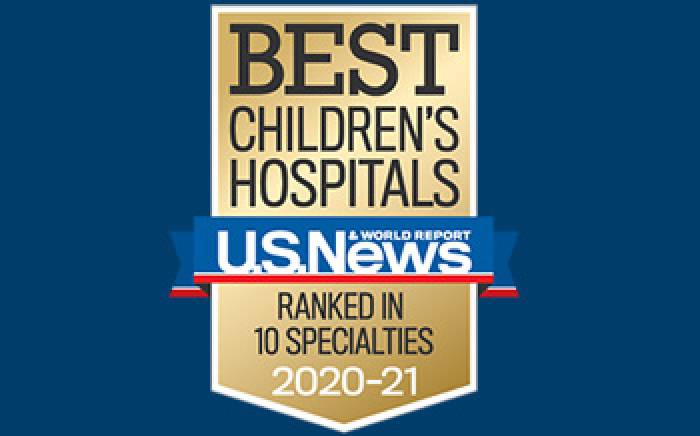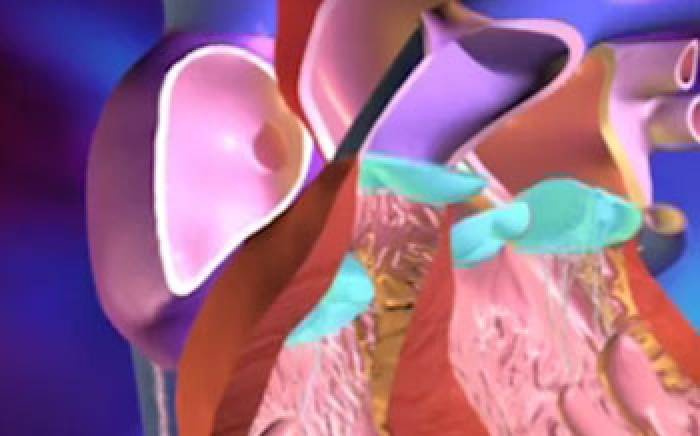 Congenital diaphragmatic hernia (CDH) is a birth defect that occurs in about one of every 2,500 live births. At six to seven weeks’ gestation, the diaphragm starts to form to separate the chest from the abdomen. In CDH, the diaphragm doesn’t develop completely and leaves a hole, which allows abdominal organs to herniate into the chest cavity.
Congenital diaphragmatic hernia (CDH) is a birth defect that occurs in about one of every 2,500 live births. At six to seven weeks’ gestation, the diaphragm starts to form to separate the chest from the abdomen. In CDH, the diaphragm doesn’t develop completely and leaves a hole, which allows abdominal organs to herniate into the chest cavity.
This life-threatening condition affects the development of the heart and lungs in the chest cavity, as well. “That’s the main problem, not the hole itself,” says Tasnim Najaf, MD, director of the CDH program and co-medical director of ECMO (extracorporeal membrane oxygenation) at St. Louis Children’s Hospital.
Comprehensive Care to Prepare Families for CDH
The majority of the diaphragm defect is on the left side of the chest and males are affected twice as often. Most CDHs are found on fetal ultrasound at 17-19 weeks’ gestation. “If the hole and the amount of herniated stomach and bowel is large enough, an experienced sonographer will see it,” Dr. Najaf says. “But sometimes a small defect is hard to pick up and the defect may not be found until after delivery.”
When the defect is found in utero, patients are referred to centers such as the Fetal Care Center, a collaboration of Barnes-Jewish Hospital, St. Louis Children’s Hospital and Washington University Physicians. St. Louis Children’s Hospital is a regional referral center for CDH management and is an ECMO center. According to Dr. Najaf, “nationally, up to 55 percent of babies with CDH are severe enough to require ECMO support.”
“When families are referred to the Fetal Care Center, they speak with specialists in several areas before delivery,” Dr. Najaf says. This includes consultations with a maternal fetal medicine specialist, a neonatologist, and a pediatric surgeon. As a neonatologist, Dr. Najaf is one of those specialists who consults with families. She is considered an expert in the field.
“Through several prenatal consultations before delivery, we get to know families well and can counsel them, evaluate their support system, and help them understand what CDH management starting from birth, surgery and recovery will look like,” Dr. Najaf says.
Expanding CDH Clinic Addresses Long-Term Challenges
CDH has a spectrum of severity. “The range of mild to moderate to severe refers not just to the size of the defect but to how severely CDH has affected lung development,” Dr. Najaf says. “CDH has a 70 percent survival rate, our CDH patients have around a 90 percent survival rate, but survival comes with many long-term issues.”
 Because of CDH’s many health impacts, Dr. Najaf led the creation of a CDH Clinic at St. Louis Children’s Hospital in 2012. “Many babies go home after weeks and months in the newborn intensive care unit (NICU) and several surgeries,” she says. “We realized babies with CDH face a lot of challenges and need to be followed in a multidisciplinary manner so we created this clinic.”
Because of CDH’s many health impacts, Dr. Najaf led the creation of a CDH Clinic at St. Louis Children’s Hospital in 2012. “Many babies go home after weeks and months in the newborn intensive care unit (NICU) and several surgeries,” she says. “We realized babies with CDH face a lot of challenges and need to be followed in a multidisciplinary manner so we created this clinic.”
Continued medical issues may include chest wall and skeletal abnormalities, respiratory syncytial virus, asthma, reactive airway disease, significant gastric reflux, and delayed growth and development, especially in patients who required ECMO, heart/ lung bypass or a lengthy hospitalization.
Some patients with CDH just need periodic follow-up in the clinic. But patients with more severe CDH need closer follow-up once they go home. Some 15-20 percent of babies with CDH require oxygen at home due to pulmonary hypoplasia and pulmonary hypertension. These babies also may have feeding tubes.
 “Babies with CDH need close follow-up to see how their lungs are developing, to taper medications, and to ensure they are receiving adequate nutrition especially protein to continue to grow,” Dr. Najaf says. “They also may need therapies at home after so much time in the NICU. These patients were falling through the cracks before we had the comprehensive follow-up program through the clinic.”
“Babies with CDH need close follow-up to see how their lungs are developing, to taper medications, and to ensure they are receiving adequate nutrition especially protein to continue to grow,” Dr. Najaf says. “They also may need therapies at home after so much time in the NICU. These patients were falling through the cracks before we had the comprehensive follow-up program through the clinic.”
While early mortality for CDH is 30-35 percent, survival rates increase as the child grows. Late mortality, often caused by respiratory viruses and persistent pulmonary hypertension, is less than 10 percent, Dr. Najaf says. “Once children have survived CDH, they often have a normal life span. They may need surgery again but they look like everyone else.”
The CDH Clinic has continued to grow. While it started with Dr. Najaf, a nurse coordinator, a therapist and a dietitian, in the past two years it has expanded to include Dr. Najaf, a dedicated pulmonologist and a dedicated surgeon, as well as a coordinated support team. The clinic’s team also works closely with cardiology and neurology.
“CDH requires a multidisciplinary approach,” Dr. Najaf says. “We bring all the expertise and resources available to one clinic where care is coordinated. Before this clinic, patients had to see all the different specialists on separate days and the care wasn’t well coordinated. Parents now have a medical home and so do pediatricians.”
Sharing and Collaborating for Better Care
Dr. Najaf adds that the clinic provides an opportunity to gain and apply the team’s collective experience in CDH. “We also contribute to the knowledge base about CDH through our observations and experiences that aren’t documented in current literature.”
The team sees patients of all ages through the CDH Clinic. “Each age group has a distinct set of problems that change as they grow,” Dr. Najaf says. “Speech development and behavioral issues may become more apparent when children start school. Some children also manifest sensory issues.”
In fact, about 11 percent of CDH patients are at high-risk of being diagnosed with autism. “Many children don’t show this early on,” Dr. Najaf says. “We’ve now extended our program to include local resources and are working on establishing stronger connections with mental health professionals to better screen for some of the neurological and behavioral health issues.”
As a referral center for southern and west central Illinois and Missouri, many patients come from long distances to the CDH Clinic.
“There are still misconceptions about CDH and many pediatricians have not seen CDH patients or are not comfortable treating CDH,” Dr. Najaf says. “We’ve established relationships with local and national pediatricians and are available any time to answer questions. Families who live outside St. Louis can’t always get in the car to come to the CDH clinic or ER here so we’re happy to work with their local pediatricians and ER to care for these children.”
She says CDH management has changed in the past several years and continues to improve. “The large CDH and ECMO centers have seen a real need for collaboration. So we’ve begun multi-center collaborations nationwide to discuss follow-up for CDH patients, how to standardize care, and how long to follow patients. Sharing knowledge and centralizing treatments will benefit patients wherever they live.”









